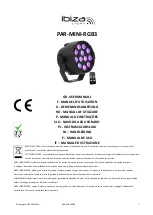
9
Removal of the Stylet and T-Lock Assembly
A.
Disconnect the T-Lock from the catheter luer connector.
B.
Stabilize the catheter position by applying light pressure to the vein distal to the insertion site.
C.
Slowly remove the T-Lock and stylet, as a unit. Do not remove stylet through T-Lock.
Caution: Never use force to remove the stylet. Resistance can damage the catheter. If resistance or bunching of the
catheter is observed, stop stylet withdrawal and allow the catheter to return to normal shape. Withdraw both the
catheter and stylet together approximately 2 cm and reattempt stylet removal. Repeat this procedure until the stylet is
easily removed. Once the stylet is out, advance the catheter into the desired position.
Note: Maximum recommended insertion is to the zero mark on the catheter shaft.
Caution: Never leave stylet or stiffening wire in place after catheter insertion; injury may occur. Remove stylet or
stiffening wire and T-lock (as applicable) after insertion.
D.
For additional information, refer to catheter and detector Instructions for Use for the insertion procedure.
References
1.
Halpern M.D., Georges. “Allergic and Toxic Reactions.” Adverse Events During Infusion Therapy Symposium, University of
California, Davis School of Medicine. (1993)
2.
Findlay, Steven R. et al,. “Hyperosmolar Triggering of Histamine Release from Human Basophils.” Journal of Clinical
Investigation. (1981)
3.
Benjamin, Richard J. et al,. “Skin Disinfection with Single-Step 2% Chlorhexidine Swab is more Effective than a Two-Step
Povidone-Iodine Method in Preventing Bacterial Contamination of Apheresis Platelets.” Transfusion. (2010)
4.
“FDA Public Health Notice: Potential Hypersensitivity to Chlorhexidine-Impregnated Medical Devices.” FDA U.S. Food and
Drug Administration. <http://www.fda.gov>. (accessed March, 1998).
5.
Beaudouin, E. et al,. “Immediate Hypersensitivity to Chlorhexidine: literature review.” European Annals of Allergy and
Clinical Immunology. 36, no. 4 (2004)
Non-pyrogenic




























